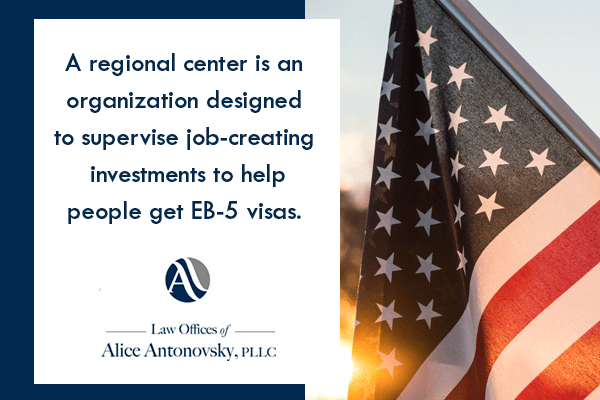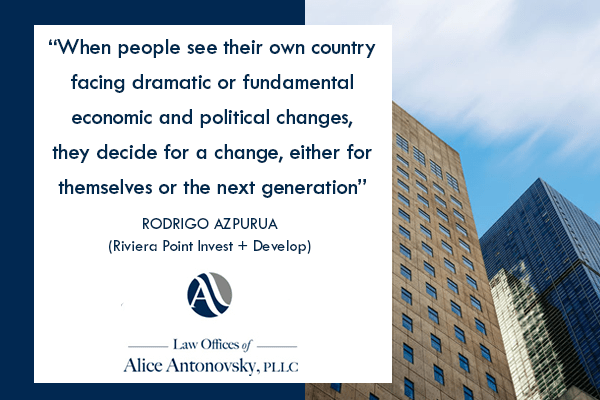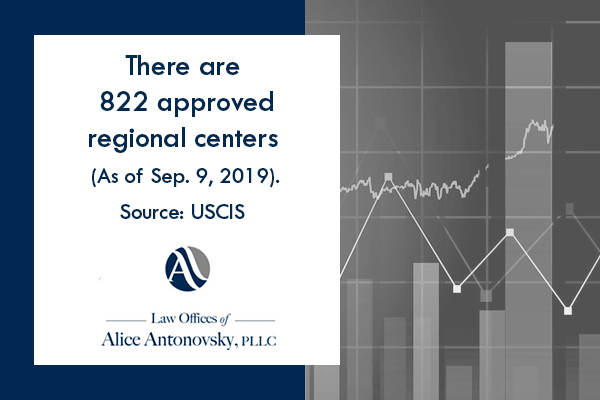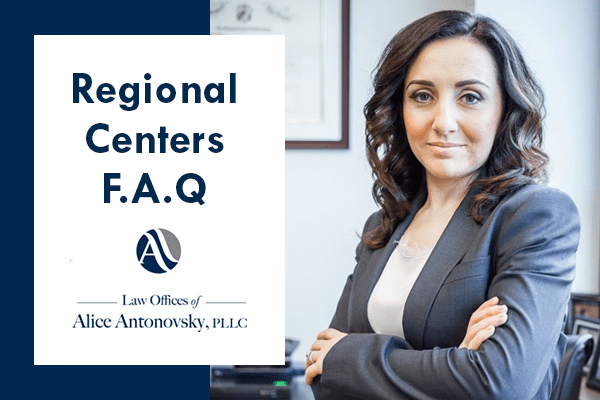Ever since new regulations were announced, alarm bells have been ringing for foreign investors trying to come to America via the EB-5 visa program. The EB-5 visa is an extremely popular way for foreign investors to come to the country, get permanent residency and have the ability to work and live here. In fact, nearly 10,000 EB-5 visas were issued by the U.S. Department of State last year. According to Statista, 48% of them were issued to China and about 10% were issued to Latin America as stated by Bloomberg. It is experiencing increased interest!
After the new EB-5 investor visa regulations were announced a few months ago, there has been a buzz about everything that has to do with this visa, from EB-5 investors to EB-5 developers to EB-5 direct investment to EB-5 regional centers. Are you one of those potential foreign investors? It’s vital to consider which EB-5 investment option suits you best!
Luckily, today’s informative blog post will teach you everything you need to know about EB-5 regional centers, from the definition to the advantages to the application process to risks to types to how to choose and, finally, to FAQs. Now you can make an informed decision before making that sizable investment!
EB-5 Regional Center - Definition
A regional center is an organization designed to supervise job-creating investments to help people get EB-5 visas. They work with local communities in order to recognize promising EB-5 investment opportunities. This lets investors take advantage of indirect and direct job creation for the sole purpose of obtaining EB-5 visas. Regional centers may be owned by the municipality where they are located or privately owned. USCIS regulates all regional centers in either case.
Inspired by the immigrant investor programs of other governments, Congress established the regional center program back in 1992. This was two years after Congress created the EB-5 visa program in 1990 in order to benefit the American economy by attracting investments solely from incredibly qualified foreign investors.

Regional Center Advantages
Regional center investment is, by far, the most popular way of getting a green card. By simply investing in a designated regional center, you get the freedom to live anywhere in the United States since you do not have to actively manage the project. As mentioned earlier, a regional center is nothing more than a business entity granted permission by USCIS in order to attract EB-5 investors.
If you're an investor who truly values simplicity and security on the path to permanent residency, regional center investment is the preferred choice for you. The application process is much simpler than it is for direct investment since regional centers have already been approved by USCIS. Investing in regional centers is also great for investors who would rather play a passive role. It’s no wonder that, according to IIUSA, around 95% of EB-5 investors go for regional center investment!
How to Apply to an EB-5 Visa Trough the Regional Center Option
There are three main phases to the application process.
- Phase 1 - You must prove that you have invested $500K in an approved regional center. Bear in mind new EB-5 regulations proposed by USCIS, taking effect on November 21, 2019, will raise the regional center investment to $900K.The most relevant part of the application process is choosing from the available regional centers. Ultimately, the success of the regional center determines if you qualify for a green card or not.
- Phase 2 - Once you’ve invested, you’ll work with your regional center and attorney to prepare the first application. The regional center will give you documents proving your investment contributes to regional job creation to satisfy the requirements of the EB-5 visa program. You’ll be granted a conditional green card if this first application process succeeds.
- Phase 3 - Two years after securing your conditional green card, you must prove to USCIS that the investment has truly met the job creation requirement. You’ll be granted a permanent resident green card which is renewable every ten years if you’re successful in the second application process. Since you no longer depend on the regional center, you’ll now be able to recover your initial investment.

EB-5 Regional Center Risks
There are a few key risks involved in choosing a regional center that EB-5 investors should consider:
-
- Revoked Certification - According to Exigr, it’s probable that USCIS may revoke the certification of any given regional center, often in the case of fraud or failure to generate economic activity. If this happens, the investor is left with no support, instantly losing their progress on the road to permanent residency. It’s important to constantly review publications by USCIS regarding regional centers with terminated approvals!
- No Fiduciary Duty - There is no law that a regional center has a fiduciary duty or not. Even though it looks like there’s fiduciary duty towards investors, the absence of a clear standard leaves investors incredibly vulnerable to fraudulent or financially-shaky EB-5 regional centers.
Types of EB-5 Regional Centers
Operating within different industries, regional centers assume different business models. Types of regional centers include:
- Agricultural developments, including farms and wineries
- Mixed-use retail
- Sports stadiums
- Hospitals
- Restaurants
- Residential properties
- Electric vehicles
- Manufacturing
- Convention centers
- Biotech and medical technologies
- Hotels
- Casinos
- Entertainment venues
- Office buildings
- Industrial projects
How to Choose the Right EB-5 Regional Center
Investors need to select wisely between all the available regional centers. With 826 EB-5 regional centers currently approved by USCIS, merely 1/3 of them are successful because not all of them operate with integrity. There are documented cases of fraud. That’s why choosing the right EB-5 regional center is crucial. To choose the right center, you should ask yourself these questions:
- How many investors have already committed to the regional center project?
- What are the industries in the EB-5 regional center’s USCIS designation?
- How are jobs created?
- What risks are associated with the regional center project?
- What is the exit strategy from the regional center after receipt of a green card?
- What is the expected ROI?
- Will non-EB-5 funding be used in the regional center? Where does it originate from?
- What are the credentials of the principals?
- What is the screening process for prospective investors?
- What EB-5 experience do the regional center’s securities and immigration counsel have?
- Have the regional center principals ever been involved in bankruptcy or a lawsuit?
- What economic model is applied in order to forecast that the expected number of jobs will be created?

EB-5 Regional Center FAQ
Here are a few frequently asked questions regarding EB-5 visas and regional centers:
Who should invest in EB-5?
EB-5 investors feature individuals from all walks of life: professionals, retirees, and people trying to enable their child’s education. Since the EB-5 visa allows for employment in the USA, many investors also create their own enterprises, get involved in part-time work or a charity. Simply put, the investor visa gives you the opportunity to do whatever you want in the United States. You may consider a regional center investment if you don't want to actively run your own company.
How do regional centers aid local communities?
EB-5 regional centers enable direct investment in projects meeting the economic ddevelopment and job creation goals of geographic areas. Various EB-5 investors are pooled by regional centers. The capital is then deployed to projects of large scale, usually according to regional economic development companies.
What financial commitment do investors make?
A direct investor is asked to invest at least $1M by law, unless the investment is in a Targeted Employment Area (TEA) - an area of high-unemployment or rural area designated by USCIS. Regional centers funding EB-5 projects in TEA’s may accept a minimum of $500K from each investor. Bear in mind new EB-5 regulations proposed by USCIS, taking effect on November 21, 2019, will raise the direct investment to $1.8M and regional center investment to $900K.
Read also: EB-5 F.A.Q: Everything You Need To Know About The Direct Investment Option
Seek Advice From an Experienced Professional
Are you a potential foreign investor? You’re encouraged to seek the advice of an experienced immigration attorney! Only a professional like Alice Antonovsky will be able to perform a proper evaluation of the EB-5 regional center you’re considering. Making the EB-5 investment decision based on a comprehensive evaluation will help ensure that you achieve your immigration goals.
At the Law Offices of Alice Antonovsky, our skilled and compassionate team of attorneys will carefully guide you through the extremely overwhelming immigration process. Call (718) 924-2896 NOW for a confidential consultation!









